Systemic transport of trans-zeatin and its precursor have differing roles in Arabidopsis sho
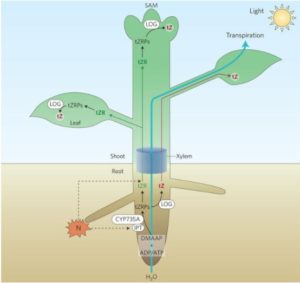 Plant hormones are made in one tissue and usually transported to act in another. One example of this is the transport of cytokinin. In the root, the precursor trans-zeatin riboside (tZR) is synthesized, then xylem loaded and transported to the shoot. Once at a site of action like the leaf or shoot apical meristem (SAM), inactive tZR is converted by the LONELY GUY enzyme into active trans-zeatin (tZ) to function in cytokinin-related processes. Osugi et al. used radio-labeled cytokinins and grafting experiments with multiple Arabidopsis mutants including cytokinin transport mutants log1,2,3,4,5,7,8 and biosynthesis mutants ipt3,5,7 to show that the active tZ form is also transported and functionally competent in cytokinin response in leaves, but not the SAM. This occurs independently of the previously demonstrated tZR transport to both leaves and SAM. While it is unclear why both modes occur, it suggest a new and more complicated model for the transport and function of cytokinin forms to regulate leaf and SAM growth. (Summary by Aaron Rochette) Nature Plants 10.1038/nplants.2017.112
Plant hormones are made in one tissue and usually transported to act in another. One example of this is the transport of cytokinin. In the root, the precursor trans-zeatin riboside (tZR) is synthesized, then xylem loaded and transported to the shoot. Once at a site of action like the leaf or shoot apical meristem (SAM), inactive tZR is converted by the LONELY GUY enzyme into active trans-zeatin (tZ) to function in cytokinin-related processes. Osugi et al. used radio-labeled cytokinins and grafting experiments with multiple Arabidopsis mutants including cytokinin transport mutants log1,2,3,4,5,7,8 and biosynthesis mutants ipt3,5,7 to show that the active tZ form is also transported and functionally competent in cytokinin response in leaves, but not the SAM. This occurs independently of the previously demonstrated tZR transport to both leaves and SAM. While it is unclear why both modes occur, it suggest a new and more complicated model for the transport and function of cytokinin forms to regulate leaf and SAM growth. (Summary by Aaron Rochette) Nature Plants 10.1038/nplants.2017.112


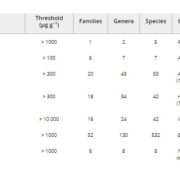

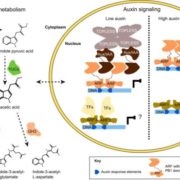
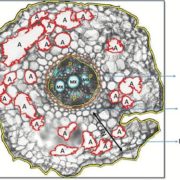

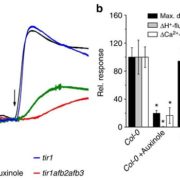


Leave a Reply
Want to join the discussion?Feel free to contribute!